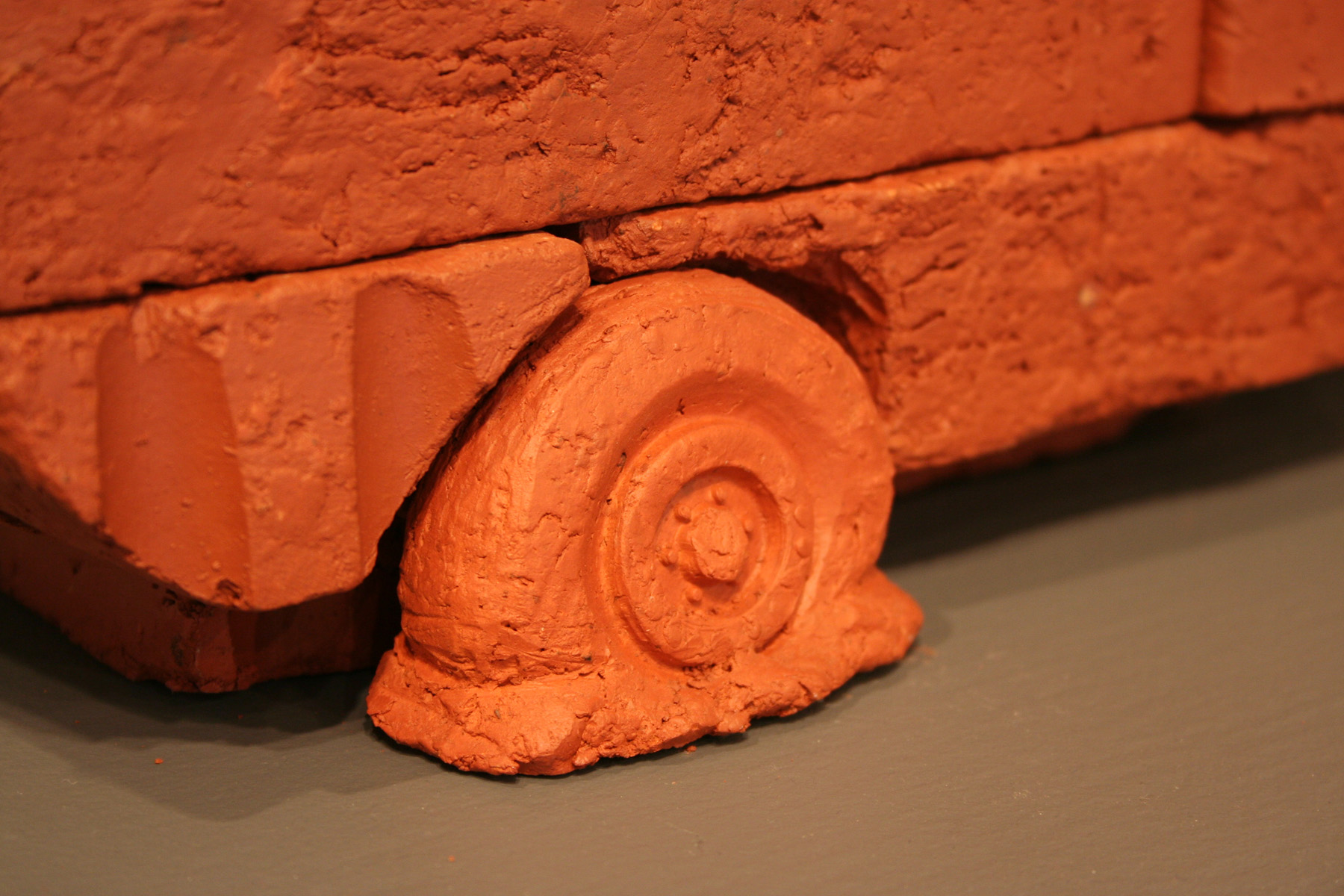“Go anywhere, stop anytime, escape taxes and rent—this is irresistible.
Nothing but death has ever before offered so much in a single package.”
(Found in Automotive Industries, December 1936.)

| Cynthia Young, Ceramic Artist and Teacher
“Go anywhere, stop anytime, escape taxes and rent—this is irresistible. |
 |
| Homepage | Early Trailers | Brick Trailers | Souvenirs | Funeral Art | Dogs! | Biography | Resume | Artist's Statement | Teaching Philosophy | Links | Contact Me |
| Artist's Statement |
| Cynthia Young |
Transient lives are the product of their experiences and past environments; there is no escape. As a child I traveled a lot with my grandparents who owned a vintage teardrop trailer. As an adult, circumstances have caused me to move frequently. All of these experiences have made me a transient. My body of work entitled Burdened Mobility investigates transience through the relationship between individuals to places and periods in their past. The metaphor of the travel trailer, circa 1930, has been employed due to its rich and colorful history. The travelers of that era conveyed to others their travel experience in postcards and in souvenirs, and I have followed in their path.
The early years of the 1900’s were the heyday of the American travel trailer, a time when mobility and independence were highly valued. Portions of society became transient and adopted rootlessness as a lifestyle, sometimes by choice and sometimes by circumstance. Florida became the destination for many of these travelers, particularly in winter. Thus the trailer represents independence, freedom from possessions, the reality of living in many and varied locations and the option of “being outa here by noon.” The travel trailer carried many who were desperate to maintain some semblance of home while living in temporary locations. Trailers built out of brick represent both the mobility and the desire for permanence and connection to roots of these travelers.
The postcard also serves as a connection between the traveler and those remaining at home. The imagery on the card allows the receiver to visualize the sender in the idealized pictured locale. Our memory of ourselves in a past place and time may also be idealized as we look back through our experiential baggage. Similarly, a purchased souvenir is a link to the time and place where it was acquired. Not only does the souvenir remind one the location itself, but it also evokes the memories of oneself in that place. The link to location, as with the postcard, need not be accurate. Perceptions are not static.
The nature of brick and the intense mobility of the travel trailer blur the distinction between mobility and permanence, past and present, freedom and constraints, and independence and connection. It is hoped that the viewers of my work will recognize the permanence and transience in their own lives and the forms of the connections that have taken place as a result.